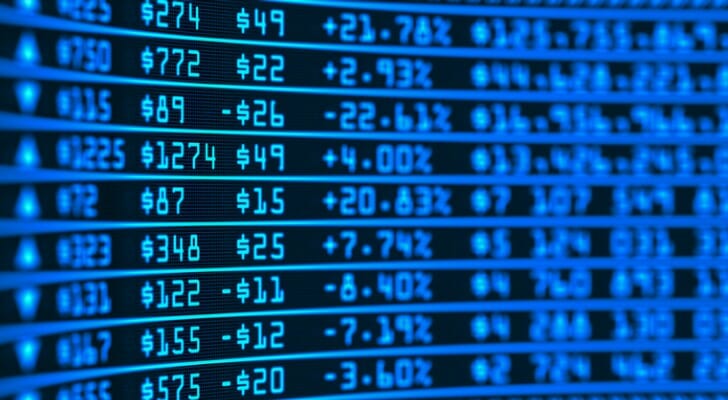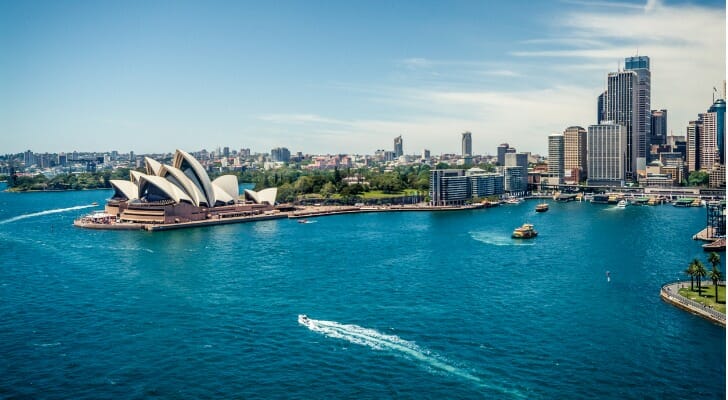The Australian Securities Exchange (ASX) lists more than 2,328 companies and has a market capitalization of approximately $1.6 trillion, or $1.11 trillion in Australian dollars (AUD). Its size places it among the 10 largest global exchanges by market cap. The Sydney-based exchanges trade in a variety of asset classes including equities, fixed income, commodities and energy. The ASX lists share prices in Australian dollars. A financial advisor can help you understand and engage with securities on the Australian Securities Exchange.
History of the Australian Securities Exchange
The Australian Securities Exchange (ASX) has its origins in 1871 when the Melbourne Stock Exchange was established, marking the beginning of organized securities trading in Australia. This was followed by the creation of stock exchanges in other major cities, including Sydney in 1871, Brisbane in 1884, and others.
For much of the 20th century, these regional exchanges operated independently, each trading securities listed locally. However, as Australia’s economy grew and became more interconnected, the need for a centralized system became evident. In 1987, the six independent state-based stock exchanges merged to form the Australian Stock Exchange Limited, creating a unified national marketplace for securities trading.
In 2006, the Australian Stock Exchange merged with the Sydney Futures Exchange, forming the modern-day Australian Securities Exchange. This merger reflected a global trend toward integrating equities and derivatives markets to offer a broader range of financial products on a single platform. The new ASX became one of the world’s top financial markets by market capitalization, facilitating trading in shares, options, futures, and other financial instruments. It was also a pioneer in adopting electronic trading systems, phasing out traditional open-outcry trading floors to improve efficiency and accessibility for investors worldwide.
Today, the ASX is a vital part of Australia’s financial infrastructure, supporting the growth of businesses and providing investors with access to a wide array of investment opportunities. It plays a crucial role in the regulation and oversight of market activities, working closely with government and industry stakeholders to maintain transparency and trust. The ASX continues to innovate, adopting technologies such as blockchain for clearing and settlement processes, reinforcing its reputation as a forward-thinking financial institution. Its evolution reflects Australia’s economic development and integration into the global financial system.
How ASX Works
The ASX is an electronic exchange, with trades occurring through a digital platform. Orders from investors to buy or sell are entered into the ASX Trade system, which matches buy and sell orders to complete trades. Only brokers that are members of the exchange can conduct trades on the ASX.
The normal trading hours of the exchange are from 10 a.m. to 4 p.m. Sydney time. Pre-open trading takes place from 7 a.m. to 10 a.m., during which brokers can enter orders in preparation for the opening. From 4 p.m. to 4:10 p.m., brokers can enter, change and cancel orders in preparation for market closing.
The operations of the ASX are supervised by the Australian Securities and Investments Commission (ASIC). In addition to the regulatory oversight exercised by ASIC, the Reserve Bank of Australia oversees the stability of the Australian financial system.
ASX Listing Requirements

The minimum criteria for being listed on the ASX include standards for free float, number of shareholders and size. Listed companies must have at least 20% of the shares free-floating, and a minimum of 300 non-affiliated shareholders who have invested at least $2,000 (AUD) each. With regard to financial standards, listed companies must have $1 million (AUD) in total profit from continuing operations for the last three years, including at least $500,000 (AUD) profit over the previous 12 months.
Alternatively, companies seeking a listing on the ASX can meet the asset test, which calls for at least $4 million (AUD) in net tangible assets or $15 million (AUD) market capitalization.
Largest ASX Stocks
Australia is home to some of the world’s largest companies in the mining, financial services and technology industries. The five largest ASX-listed companies by market capitalization include:
- Commonwealth Bank of Australia (CBA), financial services
- BHP (BHP), oil and gas and mining
- CSL (CSL), biopharmaceutical research and development
- Westpac Banking Corporation (WPC), financial services
- National Australia Bank (NAB), financial services
One of these five largest ASX companies, Westpac Banking Corporation, was the first company founded in the then-colony of New South Wales. It was created in 1817.
Special ASX Considerations
Local time in Sydney is 15 hours ahead of New York time, seven hours ahead of London time and three hours ahead of Hong Kong time. This makes the ASX the first one of the world’s major exchanges to open for normal trading on each business day.
How to Invest In the ASX
Foreign investors can trade directly in securities listed on the ASX only if they open an account with a broker that participates in the exchange. International brokers may not all have ASX trading privileges.
Investors can choose from a number of indices tied to the prices of various securities listed on the ASX. The oldest index of Australian shares is the All Ordinaries index. It consists of share prices for the 500 largest companies listed on the ASX. The S&P/ASX 200 is a market cap-weight index of large ASX stocks.
Bottom Line

The ASX is the first major stock exchange to open each trading day by its location about the international date line. It’s one of the world’s largest exchanges by market capitalization and lists major players in financial services, mining and energy and pharmaceuticals. American investors may find that the easiest way to invest in the ASX is to use one of the exchange-traded funds that track one of the ASX-based indexes, which are listed on U.S. exchanges.
Tips on Investing
- If the idea of trading securities listed on the Australian Securities Exchange appeals to you, consider working with an experienced financial advisor who understands the opportunities and risks of investing in international securities markets. Finding a financial advisor doesn’t have to be hard. SmartAsset’s free tool matches you with up to three vetted financial advisors who serve your area, and you can have a free introductory call with your advisor matches to decide which one you feel is right for you. If you’re ready to find an advisor who can help you achieve your financial goals, get started now.
- Since investing in non-U.S. securities can be more complicated than investing in a U.S. exchange, it’s important to keep close tabs on how much of your portfolio goes into such investments. A free, easy-to-use asset allocation calculator can be immensely helpful in keeping your investments balanced.
Photo credit: ©iStock.com/africanpix, ©iStock.com/JuSun, ©iStock.com/visualspace
